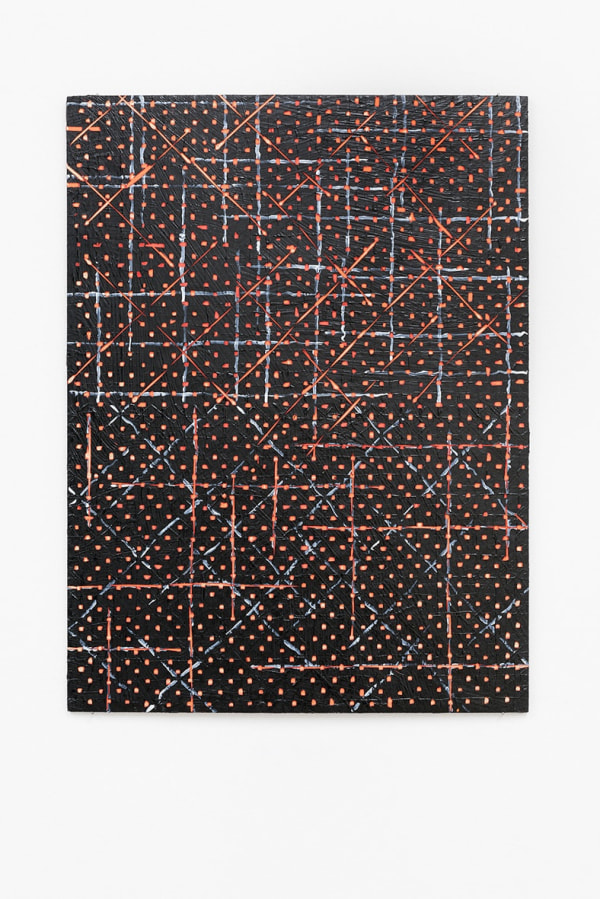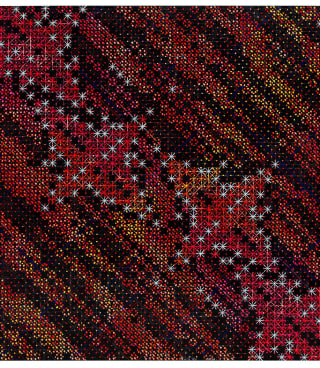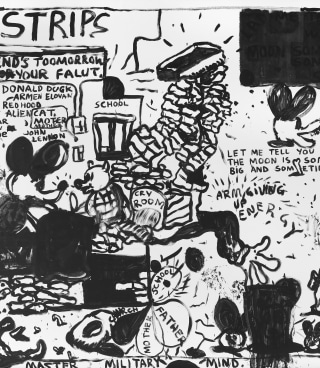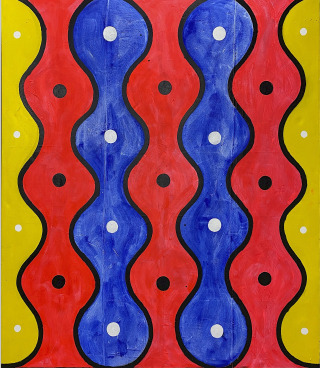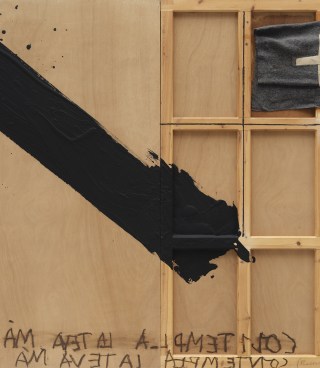Substance
Continuing its Philip Guston season, Timothy Taylor is pleased to announce the group exhibition Substance, which takes as its point of departure the “meat and potatoes” of Guston’s layered, visceral paintings – coined by Mark Leckey in his Cinema in the Round (2008) – and then goes on to explore the idea of substance in art from different points of view.
Through an eclectic mix of artists and works, the exhibition’s title and premise also acknowledges the quasi- greatest hits structure of the highly acclaimed Factory Records releases by New Order, Substance (1987) and Joy Division, Substance (1988). By exploring the possibilities of the term, this exhibition brings together a thoughtful compilation of substance art.
Guston asserted that a finished work of art is simply the remnants of a process: “What is seen and called the picture is what remains – an evidence.” Taking Guston’s cue with regard to material experimentation and process, the exhibition begins with examples of works by artists who explore image-making through a performance of materials. Artists Antoni Tàpies, Jessica Jackson Hutchins, Armen Eloyan and Eddie Martinez manipulate materials to hover between visceral figuration and abstraction. For Tàpies and Hutchins, works often include direct links between materials, images and the human body, for example the hairs on Tàpies's leg in Cames rosades (1988), or the used sofa in Hutchins’ M. N. Oh (2013). Martinez’s figurative ‘tabletop’ compositions more obviously point to Guston’s late paintings, while more recent canvases abstract the objects through layering, while also including collaged studio detritus. Eloyan’s paintings are materially meat and potatoes in their heavy use of impastoed paint, while his illustrations point to the detritus of human consumption, as in the used cigarettes, rubbish and severed body parts in the watercolour series, A while ago the elephant ordered the ants to make him a burger (2009).
Questioning the ‘substance’ of painting also demands contemplation of the two/three- dimensionality of the object; as in the glitter paintings of Chris Martin, the wax paintings of Nick Theobald, and the sculptural grids of Ding Yi, who each use substance in order to abstract. Martin’s masterful use of craft materials such as glitter and collaged paper in his multi-layered abstract paintings, creates depth and density, making his canvases sculptural. Theobald’s paintings use various organic derivations of beeswax, in order to create gradations of different pigments. In Ding Yi’s grids, paint is often built up so excessively that it becomes architectural. In the works presented here, the painting is manipulated in order to look like a wood-block used for printmaking, collapsing the image with its mode of production. A similar conflation of image-as-producer appears in Kelley Walker’s brick paintings, where layers of information are amalgamated in figurative collages, so the structure is created by the work’s content.
A tangible manifestation of the Guston ‘aftermath’ is perhaps best exemplified in works where substances are used to create images, for example in Zhang Huan’s ash painting and Georg Herold’s caviar painting. Similarly, Matthew Brandt’s photographs utilise substance as both image and process, incorporating components of his subjects into the photographic method used to produce the works. In the artist’s Lakes and Reservoirs series, for example, the colour photographs are soaked in the specific lake or reservoir water that they represent.
The chemical element intrinsic to photography then extends the trajectory of Substance towards connotations of the illicit, more literally found in recent magazine paintings by Mat Collishaw and Taryn Simon’s Contraband (2009).
The effects of illicit substances are implied in the psychedelic etchings of Volker Hüller, and the paintings of Daniel Richter. In particular, Richter’s paintings offer us the opportunity to see through substance. This tradition of artists bestowing us with the power to access what is normally impenetrable once again leads us back to Guston, who said of art: “Nothing is more boring in the world than making pictures. What you want is an experience – of making something that you haven’t seen before.”
-
 Ding YiAppearance of Crosses 2015-B92015Painting, Acrylic on wood23 5/8 x 17 3/4 in.
Ding YiAppearance of Crosses 2015-B92015Painting, Acrylic on wood23 5/8 x 17 3/4 in.
60 x 45 cm -
 Armen EloyanA while ago the elephant ordered the ants to make him a burger (4)2009Watercolour on paper16 ⅛ x 12 ⅛ in. (41 x 30.8 cm)
Armen EloyanA while ago the elephant ordered the ants to make him a burger (4)2009Watercolour on paper16 ⅛ x 12 ⅛ in. (41 x 30.8 cm) -
 Volker HüllerFlowers and Snakes2015Etching, watercolour and shellac74 1/2 x 52 3/8 in
Volker HüllerFlowers and Snakes2015Etching, watercolour and shellac74 1/2 x 52 3/8 in
189.1 x 133 cm

